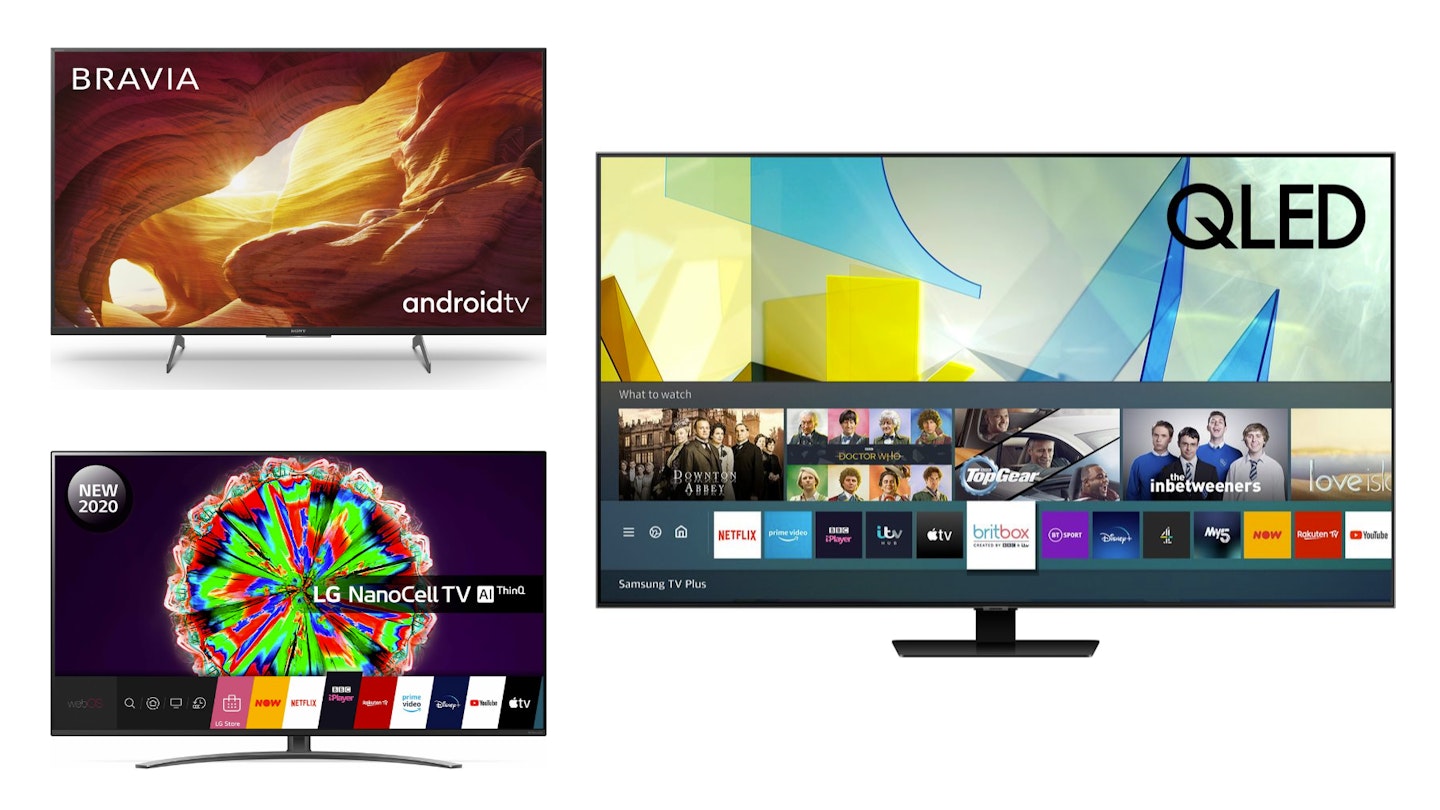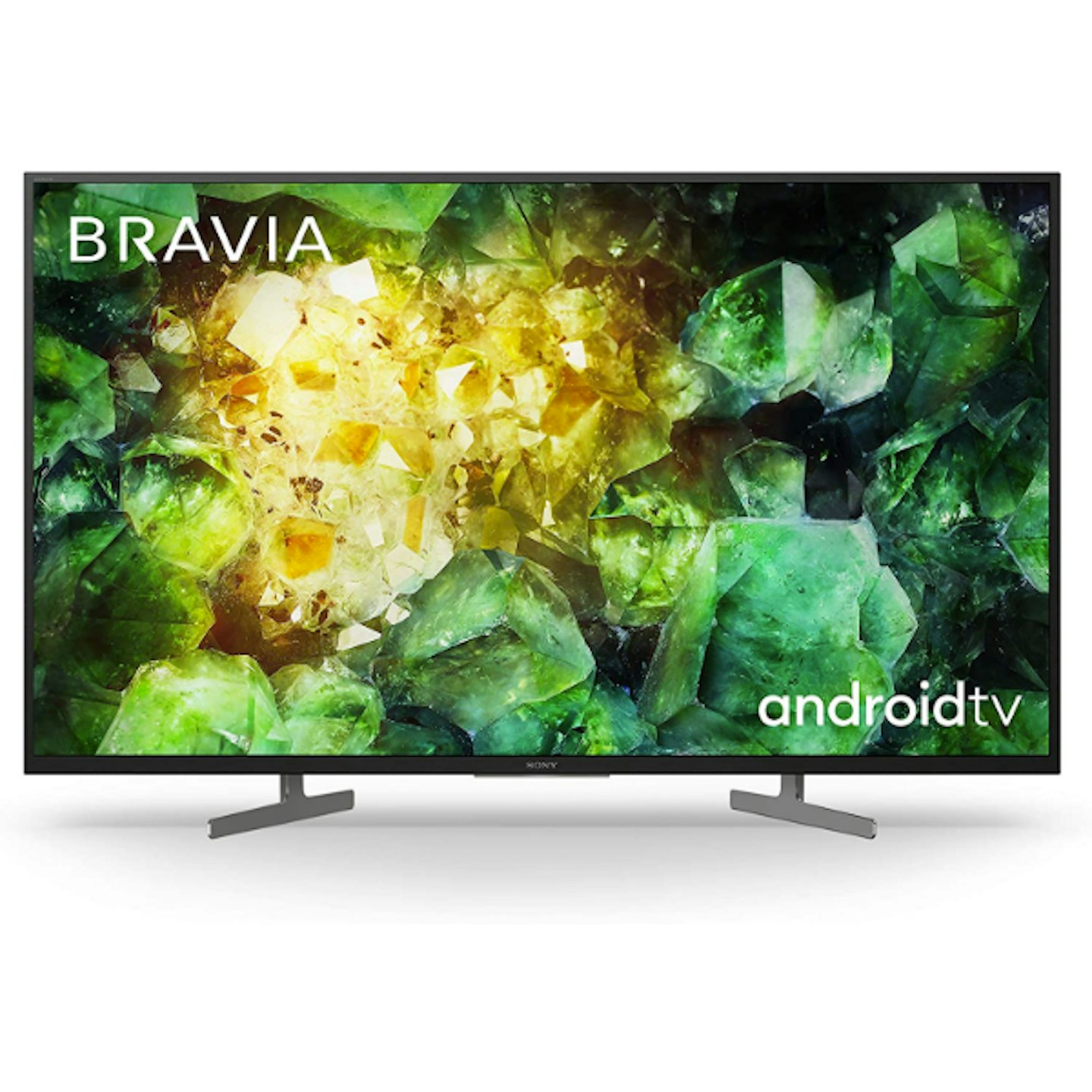It’s easy to overlook 49-inch TVs. Maybe it’s because the numbers don’t roll off the tongue as nicely as the round numbers. Or, more likely, it’s because many manufactures tend to jump straight from 43-inch to 50-inch screens. However, if you’re on the hunt for a TV upgrade, we highly recommend giving the best 49-inch TVs some consideration.
Though the selection of 49-inch TVs is slimmer than other screen sizes, the field is rich. Samsung, Sony and LG rule the roost here, and that’s far from a bad combination of names. But it’s more than just brand reputation on offer - it’s at 49-inches that these brands begin bringing in affordable versions of their best selling and best performing technologies, albeit without the hefty price tag. The impressive performance of Sony’s TRILUMINOUS display and 4K upscaling is here in force, as is Samsung’s ever-bright QLED tech. While LG OLED remains elusive, NanoCell makes an appearance, with local area dimming greatly improving the traditional LED experience considerably.
Here’s what we look for in the best 49-inch TVs:
Connectivity
Connections, or interfaces, give a TV versatility. It’s very much a case that the more, the better, and they are certainly worth paying attention to if you have specific entertainment setups in mind.
Blu-ray players, media streaming devices, video game consoles and ARC soundbars all rely on HDMI interfaces. USB ports can be used for external memory devices, unlocking live TV recording. Wireless connections, either network or Bluetooth, allow for screen mirroring and smart device integration. Even composite cables have their place, offering vintage fans the chance to indulge in retro catalogues.
Screen and Image Tech
A processor is the mind of a TV, so a quality one is a must. Support for HDR (High Dynamic Range) is essential as it takes care of contrast, improving shadows and colours. There are several standards available, including HDR10, HDR10+. HLG and Dolby Vision. How a screen is lit also affects contrast, with backlit LEDs struggling to present blacks well - micro-dimming and local dimming tech can be found on more premium models, reducing this effect.
Resolution upscaling is also important. Older content, even in 1080p, can look dated on a 4K UHD screen. Upscaling AI cleverly works behind the scenes to artificially up the resolution of legacy content to, or near to, 4K.
Refresh Rate
The refresh rate refers to how many times the screen refreshes the display every second. Measured in Hertz (Hz), the higher the refresh rate, the smoother the image. It’s best to aim high, as low refresh rates can make fast-paced content appear blurry. 50-60Hz will be fine for TV shows and movies, as they're typically captured at 27fps. Higher refresh rates are a more important feature for those who are keyed into motion performance, such as sports fans and video games enthusiasts. Often manufacturers use software to artificially up the refresh rate and create a smoother experience for viewers.
Audio Tech
Modestly priced TVs will often carry a stereo surround, which will do a fine job of sinking viewers into the content. However, as you move higher in price, different audio technologies start to emerge, like Dolby Atmos and DTS Virtual
The best 49-inch TVs
Sony BRAVIA XH81
LG UN7100
Samsung QLED Q85T
LG NANO81
Sony BRAVIA XH85
Just so you know, whilst we may receive a commission or other compensation from the links on this page, we never allow this to influence product selections.
The XH81 carries the Sony X1 4K HDR Processor, a hugely impressive gadget that produces a beautiful image. Motion is razor-sharp thanks to Motionflow XR, and colour pops with vibrancy thanks to the TRILUMINOS Display. Even legacy content has improved life and depth, courtesy of the 4K X-Reality Pro upscaling engine. One of the biggest tricks up the XH81 has up its sleeve is the Android TV operating system. It's a versatile and user-friendly smart TV platform with integrated Chromecast support. It also works across Amazon Alexa, Google Assistant, Apple AirPlay and Apple HomeKit.
Specifications:
Image Tech: X1 4K HDR Processor, X-Reality Pro, TRILUMINOS, Motionflow XR 400Hz, Dolby Vision, HDR10, HLG
Audio Tech: Dolby Atmos
Native Refresh Rate: 60Hz
Connections: HDMI 2.1 (eARC support) x4, USB 2.0 x3, Bluetooth, WiFi, ethernet, component, composite
2.
LG UN7100
The LG UN7100 49-inch TV delivers solid visuals and a reliable performance at an affordable price. In addition to 4K, the TV has TruMotion 100, HDR Pro, 4K upscaling and True Colour Accuracy working hard to ensure that everything displayed is clear, bright and vibrant. The input lag is low and great for gaming, while Filmmaker Mode works to keep movies looking as the director intended. Audio is taken care of by Ultra Surround and AI Sound, and LG's ThinQ provides voice control via Amazon Alexa or Google Assistant. All in, it’s a versatile TV set.
Specifications:
Image Tech: Quad-core Processor, TruMotion 100, HDR 10 Pro, HLG Pro
Audio Tech: Ultra Surround, AI Sound
Native Refresh Rate: 50Hz
Connections: HDMI 2.0 (ARC support) x2, USB x2, Bluetooth, WiFi, ethernet, component, composite
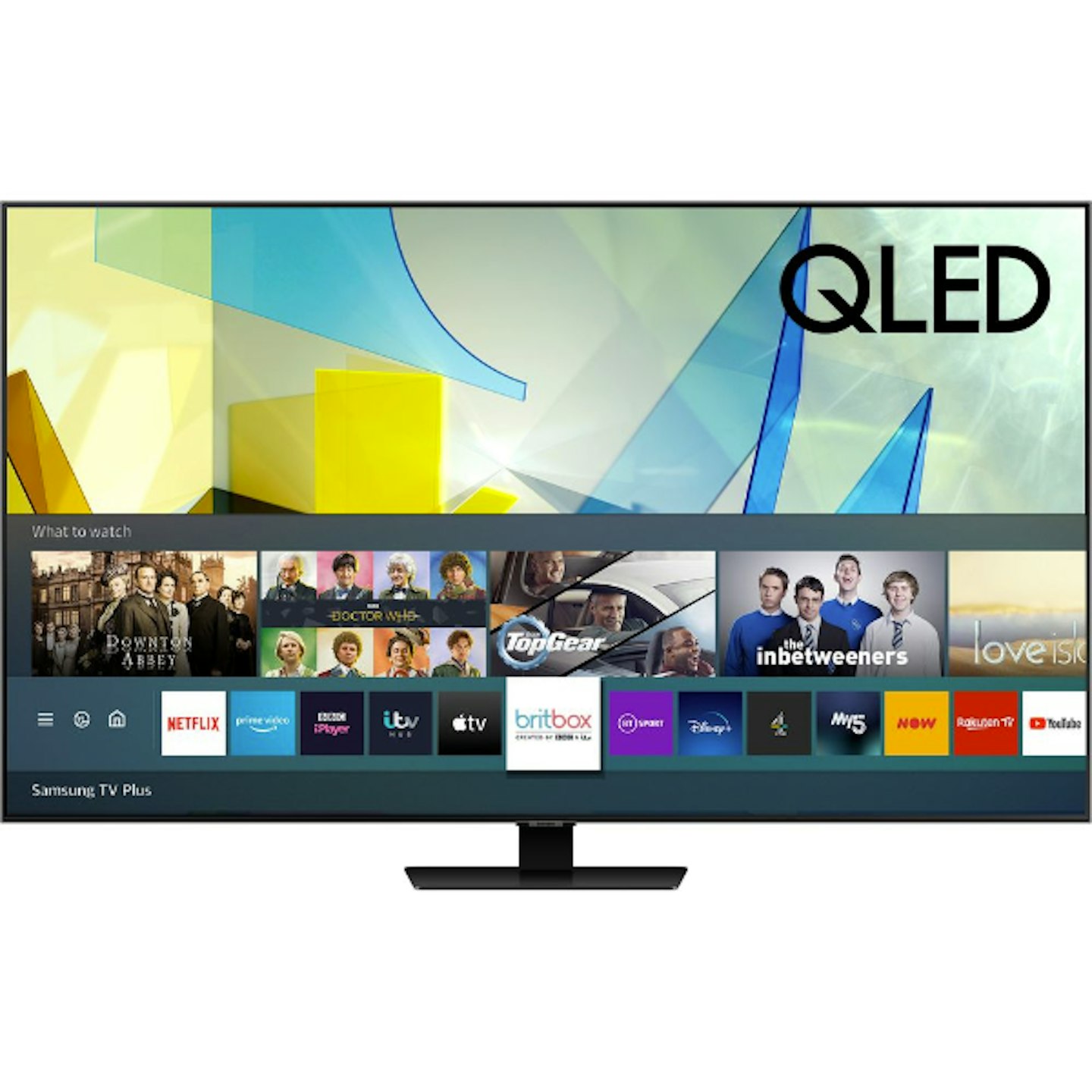
www.currys.co.uk
QLED is the first thing that will jump out here, and rightly so. This screen technology delivers an impactful, bright and vibrant image with 100% colour volume. The Samsung Quantum Processor is a powerful and intelligent component. It’s in charge of upscaling all non-4K content to the ultra HD, 4K resolution. Not only is this impressive, but it makes for a more coherent viewing experience across all media types. The Q85T also carries Adaptive Sound+, a system that automatically sets the best acoustic performance for your room.
Specifications:
Image Tech: QLED, Quantum Processor, HDR10+, HLG
Audio Tech: Adaptive Sound+, Dolby Digital Plus
Native Refresh Rate: 50/60Hz
Connections: HDMI 2.0a x4, USB 2.0 x2, Bluetooth, WiFi, ethernet
4.
LG NANO81
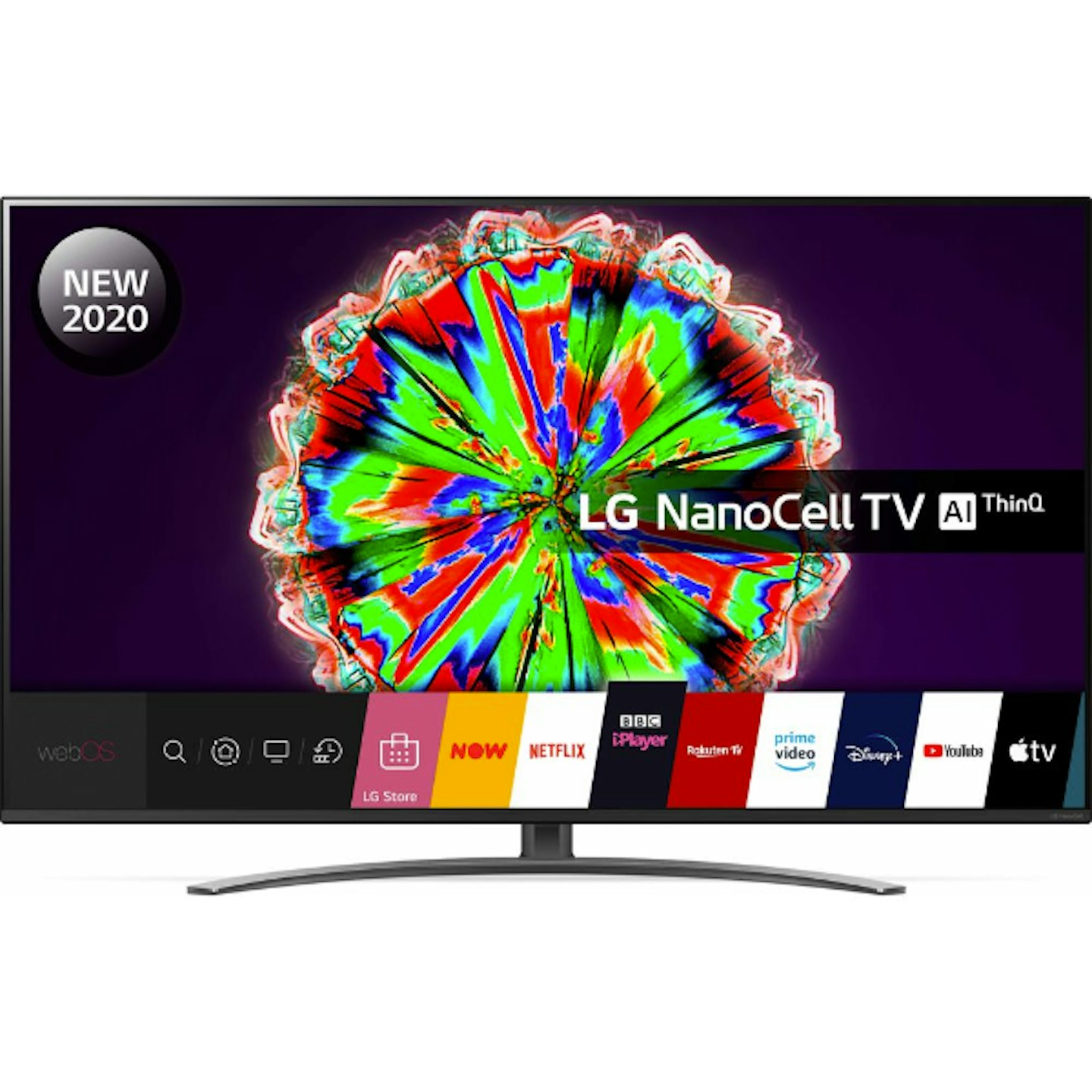
www.currys.co.uk
If the name wasn’t enough of a giveaway, the NANO81 carries LG’s NanoCell - a realistic screen technology that’s realistic and crisp and carries wide viewing angles. The local area dimming helps to add excellent contrast with deep blacks that adds weight to 4K movies, games and TV shows. Though the tech isn’t quite up to the standard of OLED, it’s a notable improvement over standard LED screens without that heavy investment. Couple this TV with an affordable soundbar, and you’ve got the basis of an immersive home cinema.
Specifications:
Image Tech: NanoCell, TruMotion 100, HDR10, HLG
Audio Tech: Ultra Surround
Native Refresh Rate: 50Hz
Connections: HDMI 2.0 x4, USB 2.0 x2, Bluetooth, WiFi, ethernet, component, composite
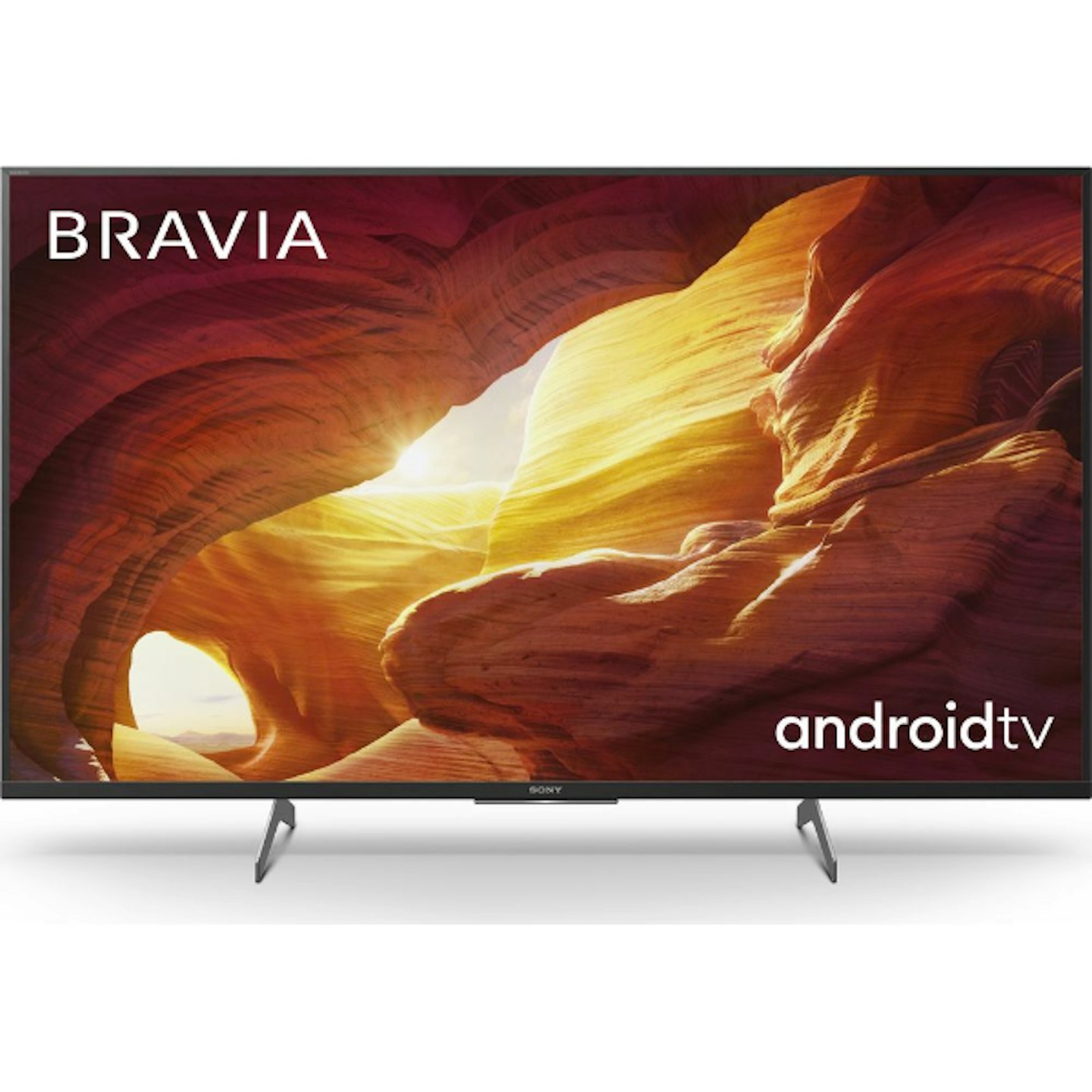
www.currys.co.uk
Sony BRAVIA TVs are well-established and synonymous with high-quality tech and viewing experiences. The XH85 follows in this tradition, with excellent quality across the latest 4K UHD releases and upscaled legacy content. While there's no local dimming or impressive native contrast, the TV does carry great response times with Motionflow XR 800Hz ensuring that console gamers and sports fans have a good, blur-free time (the native sits at 100Hz, too). Dolby Atmos puts listeners at the centre of the content, and Google Assistant is built-in to offer up new ways of controlling a TV and smart home (for Alexa fans, the TV is compatible with external devices).
Specifications:
Image Tech: X1 4K HDR Processor, X-Reality Pro, TRILUMINOS, Motionflow XR 800Hz, Dolby Vision, HDR10, HLG
Audio Tech: Dolby Atmos
Native Refresh Rate: 100Hz
Connections: HDMI 2.1 (eARC support) x1, HDMI 2.0b x3, USB 3.0 x1, USB 2.0 x2, Bluetooth, WiFi, ethernet, component, composite
HDMI, Resolution and Refresh Rate: A Quick Reference Guide
Port interfaces have a direct effect on the resolution and refresh rate that a TV can display. More recent iterations of the HDMI interfaces can transfer larger volumes of information, allowing for higher refresh rates and resolutions to be achieved.
Linking your input device with the correct port and with the right cable will ensure that a TV performs at the peak of its powers. Here’s a quick guide breaking down the maximum refresh rates and resolutions for HDMI connections:
HDMI 1.4 - 120Hz at 1080p, 75Hz at 1440p, 30Hz at 4K
HDMI 2.0 - 240Hz at 1080p, 144Hz at 1440p, 60Hz at 4K
HDMI 2.1 - 120Hz at 4K, 60Hz at 8K UHD
READ MORE: The Best 43-Inch TVs
READ MORE: The Best 50-Inch TVs
READ MORE: The Best TVs Under £1,000
READ MORE: The Best Soundbars
